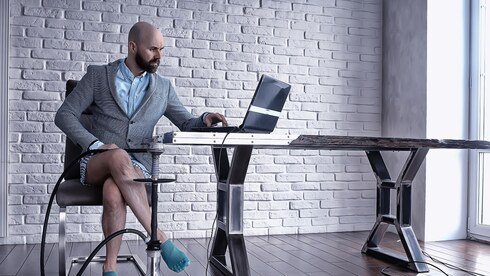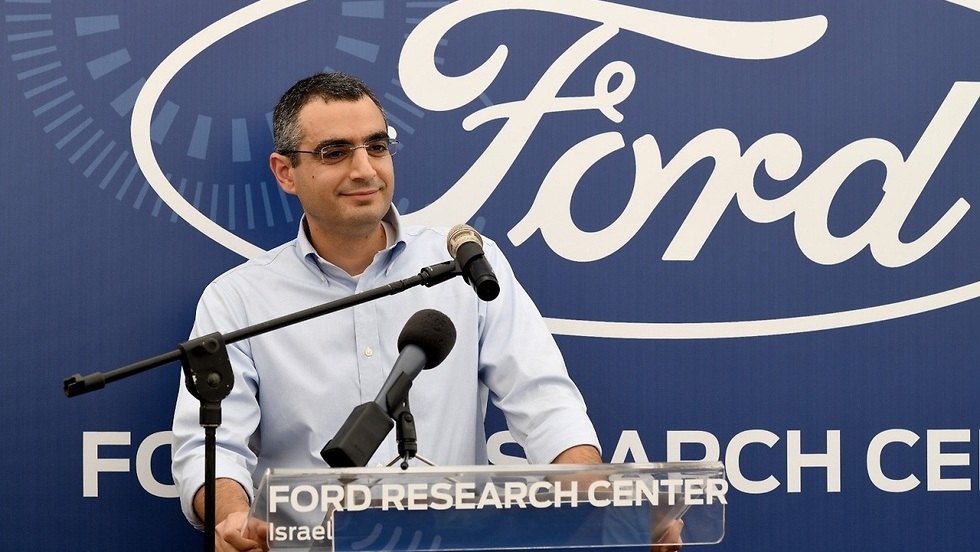
The era of working in the shadow of the corona changed quite a few of the habits we knew before the plague, with the transition to work from home hovering above them all. Since March, a significant part of the labor market in Israel has switched to a work-from-home format, with this method being adopted by almost all companies in the high-tech industry. At first, the model seemed convenient to everyone. The companies were able to maintain business and technological continuity through apps like Zoom, Microsoft Teams and Slack and the employees enjoyed more free time as the daily traffic jam burden was removed from them.
But after a few weeks at home, which quickly turned into a few months and soon a whole year, the difficulties of working from home began to float. The difficulties of balancing leisure and work, the disturbances of the children and the longing for friends from the office are only part of the price of working from home. As a result, more and more companies have decided to adopt a combined model: some of the week work from home and some from the office. Many of the companies have already committed or estimated that the model will remain strong even after the plague. But this model also carries with it quite a few challenges.


“Working from home is not a chopper for employees, it was clear to us from the first moment,” says Jania Medvedev, VP of Human Resources at FinTech Fundbox, a company that specializes in credit, risk assessments and business payments. Of working from home, and we knew it was not easy for the workers. We opened a ‘hotline’ for employees who needed emotional support and the company did everything it could to make it easier for them, such as providing an extra budget to set up a comfortable ‘home office,’ “Medvedev adds. And so the hybrid model was shaped for him.
“Initially many parents of children returned to the office, but even children without children missed the human interaction and sense of togetherness. The world has changed, what it was is not what it will be, but those who think that offices can be completely given up are wrong. “Our work model, which was flexible even in the pre-Corona period, will be more flexible. We understand that there is no need to be in the office every day, and we were excellent at work even when it happened from home,” says Medvedev.


“Anyone who thinks that offices can be completely given up is wrong.” Jania Medvedev, VP of Human Resources at Fintech Fundbox
(Photo: Augury)
The main challenge arising from such a flexible work model is the difficulty in preserving the corporate culture, as Medvedev explains it. “In order to overcome the obstacle posed by the hybrid model, we became more original day by day, as it is important to us that there is always interaction between the teams. The challenge is overcome when it comes to new employees, It’s more difficult under this model. We have created a unique onboarding program for the period, and we are constantly busy streamlining and improving it, to facilitate the process. The small business lending business, where we operate, was the focus during the corona so the company enjoyed growth in activity and now translates into manpower growth. our”.
This fear of losing the connection between some of the employees and the expected consequences of this, accompanies many companies these days, while they are actually reshaping the work culture of the company. Gal Shaul, co-founder and VP of technology at Ugori says: “Corporate culture is built from the people who created it, and it is based on trust and freedom to create, learn, act and solve the problems and challenges our customers face. Our company builds solutions that change the way industrial companies work. It all starts and ends with our people. “
The company, which operates in Industry 4.0, develops smart sensors for monitoring machine operations on production lines and provides its services to the world’s largest manufacturers, from Colgate to Heineken.


“The model has its advantages and disadvantages.” Gal Shaul, co-founder and VP of technology at Ugori
(Photo: Joey Cohen)
Bauguri adopted a model of “neighborhoods” in favor of office work. The work is done from home when it is individual, while when a team is required for planning and synchronization or a creative project – the work takes place in the office, if the guidelines allow it.
“The model has its advantages and disadvantages,” admits Shaul. “We allow employees to meet, work and be together, but at the same time certain groups of employees come into contact with other groups, if at all. To address this difficulty we took a number of actions. For example, we redesigned the office roof and made it a pleasant meeting place. A kind of lounge, where you can meet and make acquaintances with people who have recently joined the team. ”
For Ugori, which is in the midst of a significant recruitment effort aimed at doubling its workforce, this is a significant challenge. Changes in physical space are a means used by many companies to reduce the difficulty in the hybrid model and work from home. The Uguri have created an area they call a “hotel desk” for employees who frequently come to the office, where they work individually. There are not many of them, but those who come meet together, and the connection and formation within the company is strengthened.
The integrated model has become commonplace in recent months, but some companies have adopted the method in years past. One of them is SAIPS, an Israeli company acquired by Ford and playing a key role in developing the algorithmics of the autonomous vehicle built by the American car giant. “From the day the company was founded, we have operated in a hybrid model, according to which three days a week work from the office and the rest from home,” says Udi Danino, CEO and founder of SAIPS.


“During the Corona period, the number of employees in the company grew by more than 20% and the challenge of integrating the new staff members was not simple.” Udi Danino, CEO and Founder of SAIPS
(Photo: Ran Biran)
“As a philosophy, we believe that such a combination produces an optimal result. During office days, joint work is done within and between work teams, as well as most of the communication with our partners at Ford. Home days are dedicated to personal work with a minimum of distractions,” Danino explains. During the Corona closures, the entire company worked from home fully. The company currently works in two capsules, with each capsule working two days a week from the office and the rest of the time from home.
“The current model is challenging in two ways. First, groups of employees do not overlap in office presence and this may impair inter-team effectiveness and social cohesion. Second, accepting new employees and connecting them to the company spirit becomes a more complex task. During the corona period the number of employees grew more than 20 “And the challenge of integrating new staff was not easy,” says Danino, adding that “working long-term in a hybrid model is not suitable for every employee, so a significant element in our recruitment process is identifying independent employees with high self-discipline. On the other hand, working in a hybrid model produces significant benefits. “, Both in the ability to produce mutual fertilization alongside productive personal work, and in the ability to balance the home and work satisfactorily.
December 2020 marks the end of a crazy year, at the center of which of course is the global corona plague. The general vaccination process of the population will probably begin at the end of the month, just before the start of a new year, which will be marked by an exit from the plague. Even though we are approaching the victory over the Corona (so hopefully at least), it is still clear to everyone that our world will look different with the end of this period, and so will the world of work.
Five working days from the firm, the traditional model that was practiced before the corona days, will probably disappear in a significant number of companies in the economy. The hybrid model, with its advantages and disadvantages, will be popular with many companies and “home office” will become the standard for many of us. The main challenge that will arise from this work model is the connection between the employees and the DNA issue of the companies, which will have to find a way to consolidate the employees and maintain uniqueness vis-à-vis other companies – even when much of the activity takes place through the zoom.